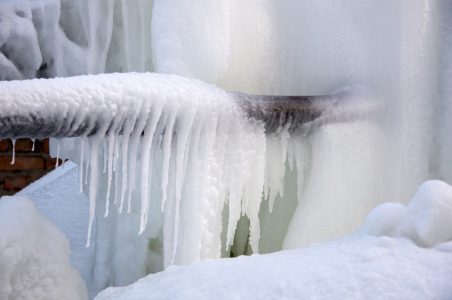Ways to Avoid Frozen Plumbing in Winter: Professional Guidance
Ways to Avoid Frozen Plumbing in Winter: Professional Guidance
Blog Article
This article following next in relation to How to Prevent Your Pipes From Freezing is without a doubt informative. Read it for yourself and decide what you think about it.

Winter can damage your pipes, especially by freezing pipes. Right here's exactly how to prevent it from happening and what to do if it does.
Intro
As temperature levels decline, the threat of icy pipelines rises, possibly causing pricey repair services and water damage. Understanding just how to stop frozen pipes is vital for home owners in chilly climates.
Understanding Icy Pipes
What causes pipes to ice up?
Pipes ice up when revealed to temperatures below 32 ° F (0 ° C) for expanded periods. As water inside the pipes ices up, it expands, taxing the pipe wall surfaces and potentially triggering them to burst.
Threats and damages
Icy pipelines can cause water system disturbances, building damage, and pricey repair services. Burst pipes can flood homes and trigger extensive architectural damages.
Indicators of Frozen Pipeline
Recognizing frozen pipelines early can prevent them from rupturing.
How to identify icy pipelines
Look for reduced water flow from taps, uncommon smells or noises from pipelines, and visible frost on subjected pipes.
Prevention Tips
Protecting prone pipes
Cover pipelines in insulation sleeves or utilize heat tape to secure them from freezing temperature levels. Concentrate on pipes in unheated or exterior areas of the home.
Home heating techniques
Maintain indoor areas sufficiently heated up, specifically areas with plumbing. Open up closet doors to allow cozy air to circulate around pipelines under sinks.
Safeguarding Exterior Plumbing
Yard hose pipes and outdoor taps
Separate and drain pipes yard hose pipes before winter months. Mount frost-proof faucets or cover outside faucets with shielded caps.
What to Do If Your Pipes Freeze
Immediate activities to take
If you suspect frozen pipes, keep taps open to soothe pressure as the ice melts. Use a hairdryer or towels soaked in hot water to thaw pipes slowly.
Long-Term Solutions
Structural changes
Consider rerouting pipelines away from exterior walls or unheated areas. Add additional insulation to attics, basements, and crawl spaces.
Upgrading insulation
Buy high-quality insulation for pipelines, attic rooms, and walls. Correct insulation assists maintain regular temperatures and lowers the threat of frozen pipelines.
Verdict
Avoiding icy pipelines calls for positive measures and quick actions. By comprehending the reasons, indicators, and preventive measures, homeowners can safeguard their plumbing throughout winter.
5 Ways to Prevent Frozen Pipes
Drain Outdoor Faucets and Disconnect Hoses
First, close the shut-off valve that controls the flow of water in the pipe to your outdoor faucet. Then, head outside to disconnect and drain your hose and open the outdoor faucet to allow the water to completely drain out of the line. Turn off the faucet when done. Finally, head back to the shut-off valve and drain the remaining water inside the pipe into a bucket or container. Additionally, if you have a home irrigation system, you should consider hiring an expert to clear the system of water each year.
Insulate Pipes
One of the best and most cost-effective methods for preventing frozen water pipes is to wrap your pipes with insulation. This is especially important for areas in your home that aren’t exposed to heat, such as an attic. We suggest using foam sleeves, which can typically be found at your local hardware store.
Keep Heat Running at 65
Your pipes are located inside your walls, and the temperature there is much colder than the rest of the house. To prevent your pipes from freezing, The Insurance Information Institute suggests that you keep your home heated to at least 65 degrees, even when traveling. You may want to invest in smart devices that can keep an eye on the temperature in your home while you’re away.
Leave Water Dripping
Moving water — even a small trickle — can prevent ice from forming inside your pipes. When freezing temps are imminent, start a drip of water from all faucets that serve exposed pipes. Leaving a few faucets running will also help relieve pressure inside the pipes and help prevent a rupture if the water inside freezes.
Open Cupboard Doors
Warm your kitchen and bathroom pipes by opening cupboards and vanities. You should also leave your interior doors ajar to help warm air circulate evenly throughout your home.

I found that blog entry on Winter Plumbing Precautions: Preventing Frozen Pipes when doing a search on the web. Sharing is nice. One never knows, you will be helping someone out. Thanks for your time. Return soon.
Go Services Report this page